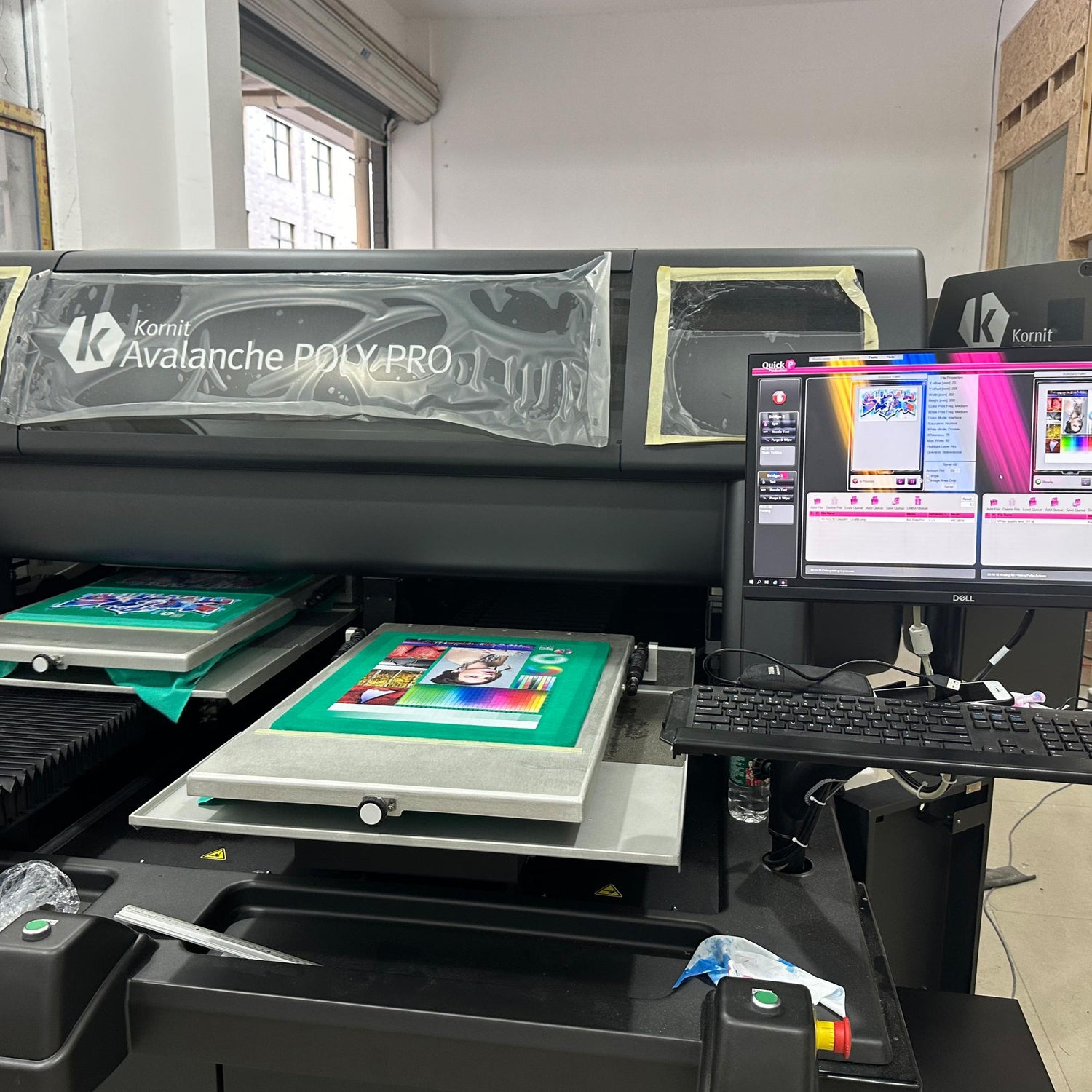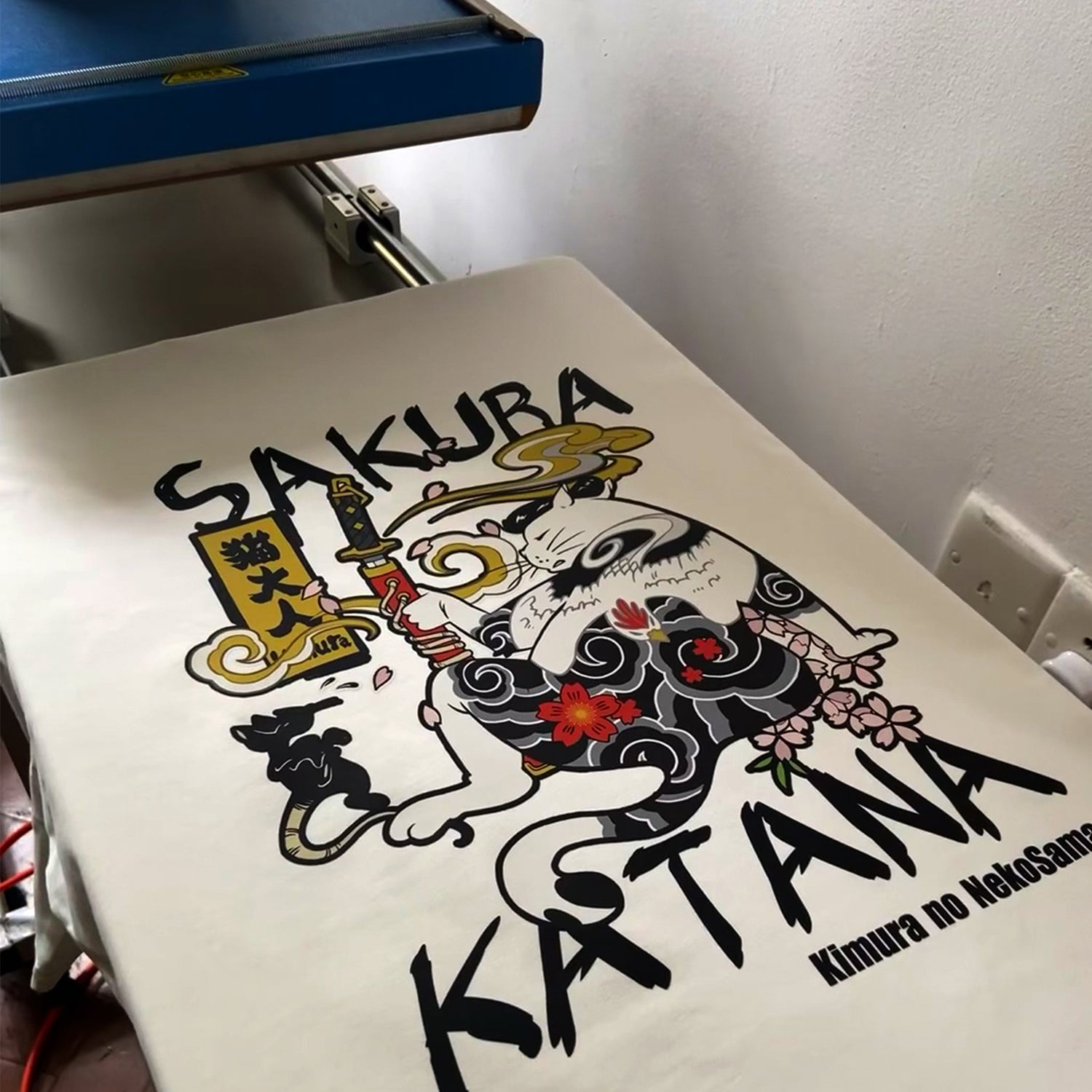Craftsmanship Library
We excel in a variety of individual or combined techniques. Here are showcases of commonly employed craftsmanship.
Please feel free to Contact Us for any additional craft-related inquiries.
Digital Printing

Using inkjet technology to directly print designs onto fabric, commonly known as DTG (Direct-to-Garment) printing. Due to the ink penetrating the fabric, garments produced using DTG are lighter and more breathable.
At WEIMI, the debate of DTG vs. screen printing doesn’t exist—we’ve got the best of both worlds. Our Kornit DTG machine, imported from Israel, delivers exceptional quality and perfectly brings your designs to life, no matter how intricate they are.
Screen Printing
-

Screen printing utilizes a mesh screen as a template to apply an ink layer onto the fabric's surface.
For screen printing, a separate screen template is needed for each different color in the design, and each template requires one or multiple printing processes. Therefore, for patterns with multiple colors, both the production and template costs for screen printing tend to be relatively high.
Here are several common types of screen printing:
-

Puff Printing
Puff printing employs a paste that expands when subjected to heat, resulting in a distinctive raised texture after the printing and drying process.
-

Crack Printing
Crackled printing utilizes a paste that shrinks and cracks when exposed to heat, creating a natural textured crackle effect after printing and drying.
-

Pulling Printing
Pulling paste printing employs a highly durable paste, and after applying the paste with a brush, the screen is lifted to leave more paste on the fabric.
-

Thick Plate Printing
Thick Plate Printing utilizes a specialized printing plate that allows for the application of a thicker layer of ink during the printing process, resulting in a bold and prominent printed effect.
Embroidery
-

Embroidery comes in two types: stitching patterns directly onto the fabric with thread or applying pre-made embroidered materials onto the clothing.
The larger the embroidery area and the more complex the stitching, the higher the cost.
Also, it’s not advisable to use heavy embroidery on lightweight fabrics with a low GSM.
-

Applique Embroidery
Applique is a technique of sewing cut fabric pieces onto a base to create unique patterns and add texture. The effect varies depending on the material of the fabric used.
-

3D Embroidery
3D embroidery adds height with padding (e.g., foam) for a three-dimensional effect, requiring heavier fabric to prevent damage.
-

Toothbrush Embroidery
Toothbrush embroidery creates a soft, bristle-like texture using special stitching techniques, offering a plush, textured aesthetic.
-

Flat Embroidery
Flat embroidery creates a smooth, even effect with patterns lying flat on the fabric. It’s suitable for most fabrics and can vary with different stitching techniques.
-

Towel Embroidery
Towel embroidery creates a looped, towel-like texture with special stitches, giving a soft, plush feel. It's often used in sportswear, towels, and bathrobes.
-

Embroidery Patch
An embroidery patch is a design sewn or ironed onto items, commonly used in streetwear for easy customization with logos or unique designs.
Heat Transfer Printing

Heat transfer printing involves printing on transfer paper or vinyl and then applying it to clothing using heat and pressure.
The key advantages of heat transfer are its ability to produce vibrant colors, detailed designs, and high-resolution patterns at a relatively lower cost.
However, heat transfer prints may have a noticeable plastic feel and lack breathability.
Washing Effect
-

The washing process aims to achieve a vintage or distressed appearance to clothing. Spraying a special effects agents solution onto specific areas achieves localized fading, while immersing the entire garment in a mixture of special effects agents solution, sand (and stones), and agitating it results in overall fading with unique patterns.
Here are several common types of screen printing:
-

Snow Wash
-

Dye
-

Sun Fade
Others
-

High-frequency Printing
High-frequency print uses electrical currents to create embossing effects on materials like PVC or PU, adding a strong, three-dimensional look.
-

Embossed Printing
Embossed print raises patterns or text using pressure and heat, adding depth. It requires heavier fabric and enhances design details.
-

Flock Printing
Flock print adheres tiny velvet fibers to an adhesive layer, creating a soft, velvety texture. It's often used to add luxury and texture to garments.
-

Fuorescence Print
Fluorescence print uses glowing pigments for designs that shine in the dark or under UV light, adding vibrant impact to sportswear and streetwear.
-

Hotfix Rhinestone
Rhinestone print applies imitation rhinestones to fabric, creating sparkling patterns. It's often used to add dazzling effects and can be combined with other techniques.
-

Metal Printing
Metal print uses metallic inks or films to create shiny patterns, giving designs a futuristic, modern look, popular in high-fashion and avant-garde styles.
Combined Craft Sample
-

Applique+Rhinstone
-

DTG+Rhinstone
-

FabricPrinting+Screenprint
-

Puff print+Rhinstone
-

ScreenPrint+Applique
-

Sun Fade +DTG
Today's trend-forward brands are leaning into increasingly intricate designs, often requiring a seamless blend of multiple techniques. But at Weimi, we've got it all covered. No matter how complex your vision is, trust us to handle it with ease and precision. Your creativity is in safe hands—let us bring your ideas to life.




























